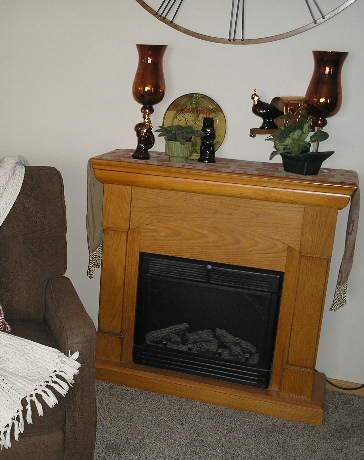If you don’t already know . . . I’ll tell you now, March is my least favorite month. I’d prefer to skip it entirely and go straight to . . . April.
This year, I’m trying to kick myself in the rear, and steer clear of the doom & gloom. March is associated with many things green, so let’s put some of them in a room.
People associate greens with landscapes, and that may be why they feel comfortable using those colors in their home.
A light wallpaper and darker accents are fun here.
A larger concentration is used below. Notice they’ve chosen a monochromatic scheme. This is where varied tints and shades of one color are used. This can be done gradually for the hesitant decorator. Choose one color you enjoy, and work it throughout your space, using light to medium tones, then darker as you become more confident.
The idea of any saturated decor colors is frightening for many of us, though. Greens are not the first choice on my walls either.
Our home has a very open floor plan. Entering the front door, you are immediately in the living room, from which you can also see through the dining room, into the family room, and down a hallway to the private areas. This room (below) and down the hallway, are done in a light, neutral; a custom color I have used for years in other homes as well.
Neutrals’ accomplishments are many. Here, it provides a clean look, a feeling of spaciousness and light, and is a wonderful backdrop for large art pieces. Finally, it visually leads your eye down the hallway, and out to the adjoining rooms. Your rooms should “play nice with each” 😀 , and continuing colors helps unite them, giving your spaces a comfortable flow.
Longtime readers and followers know that I’m NOT afraid of bolder colors and deep tones, but I have a definite plan with all colors as they play throughout my home.

If you are a neutral person, or just not ready for prime time, take baby steps and do a little experimenting, using accessories for your color and interests.
Greens are such fun to work with, and as noted, are the colors of nature which often puts people at ease. The easiest green in decor is PLANTS. Easy as 1-2-3 … colorful, affordable and moveable. (And easy to replace if you have a brown thumb 😦 ).

Set a plant most anywhere and add a few favorite pieces with it. Here, we’re using the MAGIC #3 Rule of Display; 3 different objects, 3 different textures, 3 different weights and heights. Three items are always a great way to start any display, then it’s easy to go from there!

The above plant (variegated hoya) provides it’s own three, with light and dark, and white sprinkled leaves. This plant can also produce cream colored leaves.

USE WHAT YOU HAVE. I’ve had this versatile baker’s rack in three homes. Here it helps me group big plants in one space, for light and easy watering. But small plants work too.


These two are African Violets. They need light but not bright sun. More importantly, they need to be kept damp … NOT dripping but, damp.

And below is a simple (but super) philodendron. It takes quite a bit of abuse. Throw a little water on it, once or twice a week, give it a little light and room to grow. Mine is supported with a little metal stand (thrift store find), but a simple wood stake or branch will work too.

Nature items i.e. wood pieces, stones and collected items, work especially well with greens – but just about any other color too. Pick up several color cards at your favorite paint supply store. Then shop your home for decor items, fabrics (even scarves from your closet). Put all together and just live with them for awhile. It’s a great way to start and then take it from there . . . when you’re ready.

I owed you all a long post, as it’s been quite a while since we connected. I always enjoy your thoughts, questions and comments . . . BUT BE SURE to mark the box below the post, to receive follow-up comments.
Later – Cheryl











